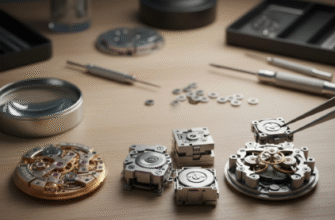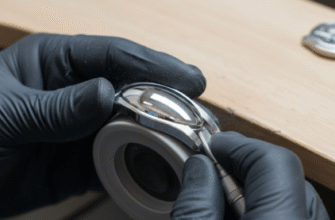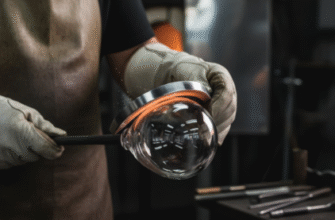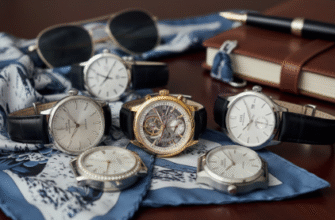The seemingly disparate worlds of horology and military intelligence share a surprisingly rich and interwoven history, a connection forged in the crucible of necessity, precision, and the relentless pursuit of information superiority. From the earliest naval chronometers to the miniaturized timers of clandestine operations, the mastery of timekeeping has been a critical, often unspoken, partner to the art of espionage and warfare. This relationship is not merely one of convenience but a fundamental dependency, where the accuracy of a tick could mean the difference between operational success and catastrophic failure.
The Foundational Role of Precision Timing in Global Projection
Before the age of satellite navigation and ubiquitous digital synchronization, **accurate time** was the bedrock of global power projection. Navigating the open seas required incredibly precise clocks—**marine chronometers**—to determine longitude. This seemingly simple horological device was, in its time, the ultimate piece of military and colonial intelligence technology. The nation that could reliably navigate to distant shores held an overwhelming military and commercial advantage. The initial development and refinement of these robust, temperature-compensated timepieces, notably by figures like **John Harrison**, were national security imperatives, funded and driven by the highest levels of government and military command. The pursuit was not academic; it was strategic.
The ability to accurately determine a ship’s position at sea, facilitated by the marine chronometer, was a direct factor in the rise of maritime powers. This capability was essential for planning naval campaigns, executing surprise attacks, and maintaining supply lines, making horology a foundational component of 18th and 19th-century military strategy.
The logistical complexity of coordinating fleets, armies, and later, air forces, across vast geographical distances mandated a standard, synchronized time. Early forms of military intelligence often centered on the enemy’s logistical chain, and timing devices were crucial for scheduling troop movements, artillery fire, and supply drops. A deviation of mere minutes could expose an entire operation to enemy counteraction.
Synchronization and Command: The Backbone of Modern Warfare
The scale of conflict in the 20th century, particularly the two World Wars, elevated the importance of synchronization to an art form. **Trench warfare**, for example, relied on precisely timed artillery barrages to precede infantry advances. The failure of even one unit’s watch could lead to an infantry charge running into its own artillery fire. This era saw the mass production of specialized **military-specification watches**—known for their legibility, robustness, and, most critically, their reliability under extreme conditions.
In the air, navigators relied on specialized **pilot’s watches** and chronographs to calculate headings, fuel consumption, and bombing runs. These devices weren’t just for telling the time; they were sophisticated, wearable calculators indispensable for reconnaissance and target acquisition. The iconic **Type A-7 watch**, for instance, was designed with a rotating bezel and a specific dial layout to assist pilots in the high-stress environment of the cockpit, linking time measurement directly to the successful execution of aerial intelligence gathering and combat missions.
The Clandestine Connection: Horology in Espionage
Where the military relied on open, robust timepieces, the world of espionage required something altogether more subtle and precise. The intelligence community’s relationship with horology is deeply rooted in the need for **controlled demolition** and **surreptitious communication**. Timing mechanisms became miniature, clandestine tools.
- Detonation Timers: The development of highly accurate, small-scale mechanical timers was a critical technological pursuit for intelligence agencies. These devices, often custom-built by expert watchmakers, provided the means for agents to set delayed charges for sabotage operations with absolute certainty, ensuring the agent’s safe exfiltration before the event.
- Miniaturized Recording: Micro-mechanics, a core discipline of horology, was leveraged to create miniaturized listening and recording devices. The skills used to create complex watch movements were repurposed to build tiny, discreet clockwork mechanisms for spooling wire recordings or driving miniature cameras, essential for gathering photographic intelligence.
- Covert Signaling: Specialized watches could also be used for signaling. Subtle modifications to a watch’s mechanism or its case could provide a unique, coded means of communication between agents, where a brief delay in a specific watch hand’s movement might convey a vital piece of information.
The expertise of master watchmakers, particularly in Switzerland, was highly sought after by intelligence agencies during the Cold War. Their unparalleled skill in working with miniature gears, springs, and escapements was directly applied to developing specialized surveillance equipment and mission-critical timers, moving their craft from luxury goods to instruments of strategic importance.
The concept of **”dead drop”** synchronization—where two agents who never meet need to coordinate an exchange of information—is a classic intelligence technique that hinges entirely on synchronized, reliable timekeeping. A failure in a pocket watch or wristwatch could compromise an agent, abort a mission, or, worst of all, lead to a double-cross being exposed prematurely. This extreme reliance cemented the status of a high-quality, reliable watch as a non-negotiable piece of an operative’s gear.
The Evolution into Quartz and Digital Precision
The advent of **quartz technology** and later **atomic clocks** did not diminish the link; it merely modernized it. The quartz crisis of the 1970s transformed commercial horology but delivered a massive leap in precision and robustness to military applications. Digital timing and secure, encrypted synchronization protocols became the new standard for coordinating sensitive, time-definite operations (TDOs). However, the underlying principle—the absolute necessity of a reliable, independent time base—remained the same.
Even today, with GPS providing seemingly instant time correction, the military and intelligence communities maintain a deep-seated respect for independent, physical timekeeping mechanisms. In an environment where electronic warfare could jam satellite signals, a robust, anti-magnetic, and mechanically sound timepiece serves as a critical **failsafe**. The lessons learned from the marine chronometer—that true independence and reliability stem from mechanical or localized electronic precision—continue to inform the design of specialized equipment for personnel operating in contested domains.
In essence, the history of horology is a parallel history of military and intelligence advancement. It is a story of how a craft dedicated to measuring the seemingly abstract passage of time became instrumental in controlling the tangible outcomes of conflict and espionage, providing the silent, precise foundation upon which global strategies were, and continue to be, built. The tick of a watch is often the unheralded countdown to a moment of historical significance.
While modern technology has automated much of time synchronization, the intelligence and special operations communities still place a high value on analog and robust digital timepieces for operational redundancy. Relying solely on systems that can be electronically compromised is a recognized vulnerability, making a reliable, self-contained watch a fundamental part of an operator’s readiness kit in critical missions. Precision time remains an essential, non-negotiable tool.








